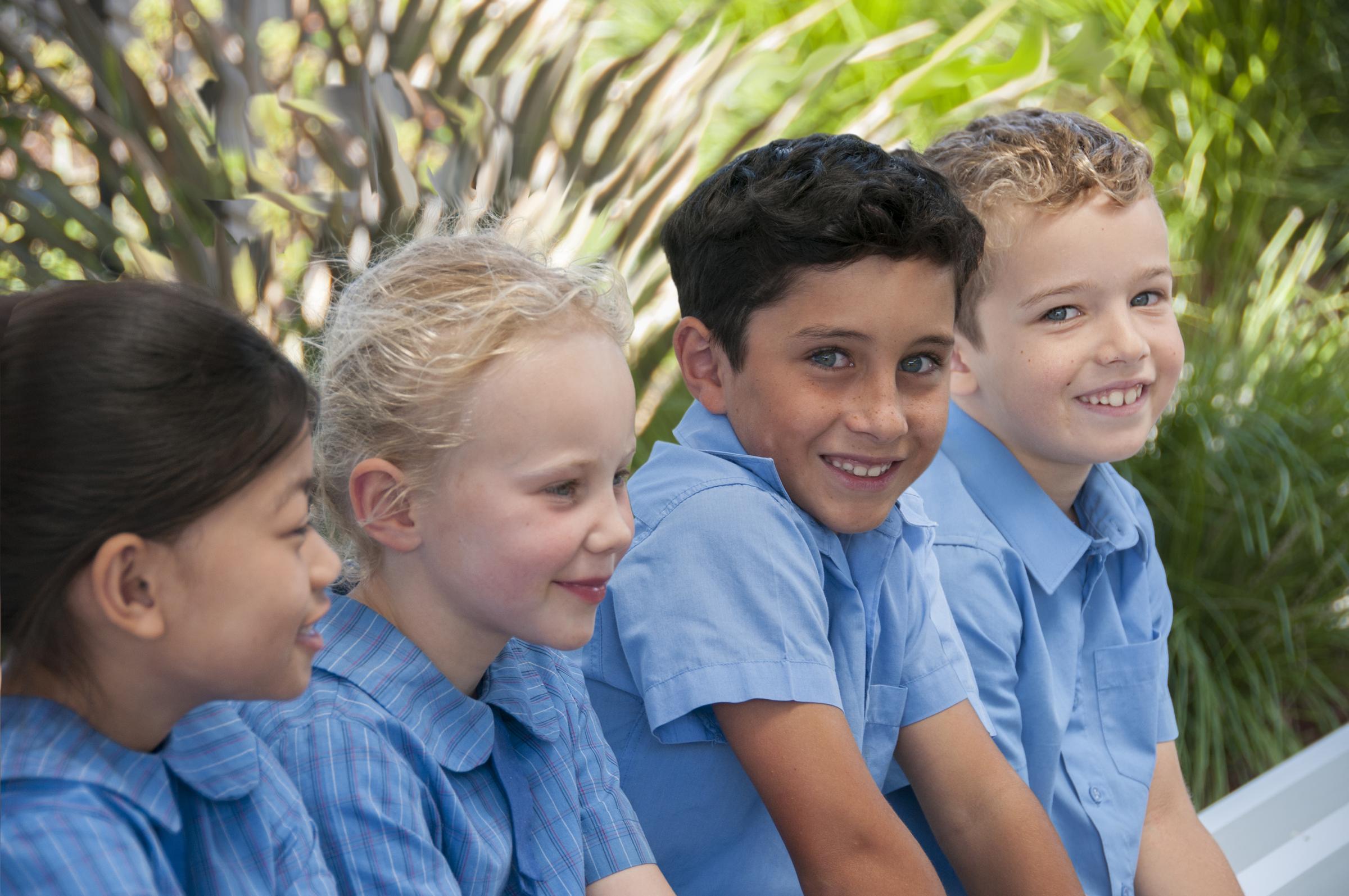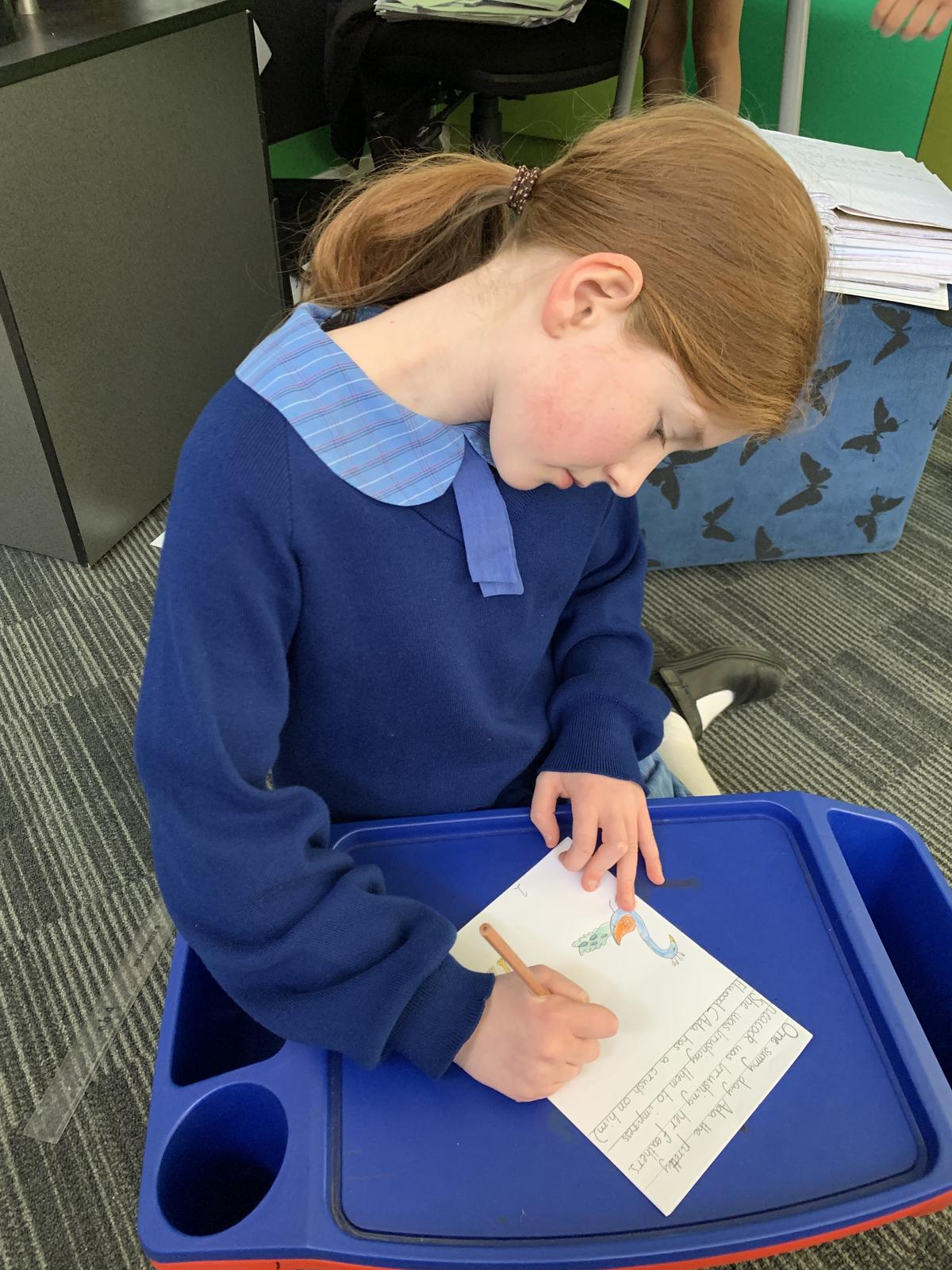Student Well-being

Year 3/4 Community
In our Year 3/4 Community, we have been exploring the different types of problems we have or may encounter in our lives and the importance of positive coping and help-seeking strategies.
We have been creating picture storybooks to teach younger children about how to cope with challenges which produce negative emotions such as anger, fear, sadness or loneliness. First, we read the picturebooks, “Lion’s in a Flap”, “Can Anyone be as Gloomy as Me?”, “How Big are Your Worries Little Bear?” and discussed the story line and message. We also explored how the characters show what feelings look and feel like and how they model positive coping and help seeking strategies.
We then brainstormed some situations involving change or a challenge that younger children might experience and mapped out our stories using storyboards. Each story will include:
- An introduction to the character
- A description for the challenge or upsetting situation
- Their emotional reaction
- Their bodily reaction to the situation
- An action they used to cope which did no work
- A help-seeking action that did work
- How they carried out the advice
- The happier ending.
Learning to regulate emotions is an important part of growing up for kids. Picture books provide an engaging, safe and supportive environment for kids to explore and learn about these important skills.
Mindfulness for children and teenagers
About mindfulness
Our minds are constantly active. You might be watching television – but also thinking about the past, or worrying about the future, or wondering what you’re going to have for dinner.
Mindfulness is focusing your complete attention on what’s happening right now. It’s also letting your thoughts and worries come and go without judgment.
You can be mindful of your internal world – for example, what you’re thinking, how your breath makes your chest rise and fall, or how an emotion feels in your body. Or you can focus on what’s around you – for example, the sun on your skin, the smell of your coffee, or the sound of a bird.
You can be mindful anywhere and with anything. For example, you can be mindful while you’re eating, walking, listening to music or sitting.
When you practise mindfulness, you’ll feel generally calmer, more focused and better able to concentrate. And in moments of stress, you’ll be able to pause, relax, see things more clearly and make better decisions. For children and teenagers, mindfulness can be a way to deal with the stress of study, work and play as they get older.
Everyday mindfulness
You can use everyday moments to build and practise everyday mindfulness. The more you practise, the more benefit you’ll get.
You can also encourage your child to build mindfulness. In many ways, this is simply about getting your child to do what they naturally do. Young children are naturally mindful because every new experience is fresh and exciting for them. Older children and teenagers can learn mindfulness.
There are many ways to help your child build and practise mindfulness. For example:
- Colouring in is a great way to get your child focused on a task.
- Walking through nature with the family can get your child interested in exploring the beauty of nature. Your child could collect and examine autumn leaves, or feel the sand beneath their toes during a walk on the beach.
- Taking photographs or drawing something interesting or beautiful – like a sea shell or an insect – encourages your child to look closely at details.
- Looking after a vegetable patch encourages your child to notice how plants grow.
- Listening to music and focusing on the instruments or lyrics is a great way for your child to focus on the present without distraction.
When you practise mindfulness, you’ll feel generally calmer, more focused and better able to concentrate. And in moments of stress, you’ll be able to pause, relax, see things more clearly and make better decisions.
Mindfulness: the evidence
There’s clear evidence that practising mindfulness can have health benefits for adults.
For example, studies suggest that mindfulness-based stress reduction (MBSR) can reduce stress and improve other mental health issues. Mindfulness-based cognitive therapy (MBCT) can help people with depression stay well and stop them from getting depressed again. It can work just as well as an antidepressant.
Being ‘present’ and less anxious can boost social skills and academic performance. It can also help people manage emotions. Mindfulness can also reduce anxiety and depression.
There’s growing research into mindfulness for children and teenagers, including both school-based mindfulness group programs and individual practice. The research suggests that regular mindfulness practice and programs:
- work best at helping children and teenagers reduce stress, anxiety and panic
- appear to improve attention and reduce low mood
- can boost children’s and teenagers’ empathy and self-compassion.
Children and teenagers seem to enjoy and appreciate mindfulness activities, and schools are introducing mindfulness-based exercises into their day-to-day routines.
More articles like this on:
Lauren Borg
e-Learning/Student Well-being Leader






